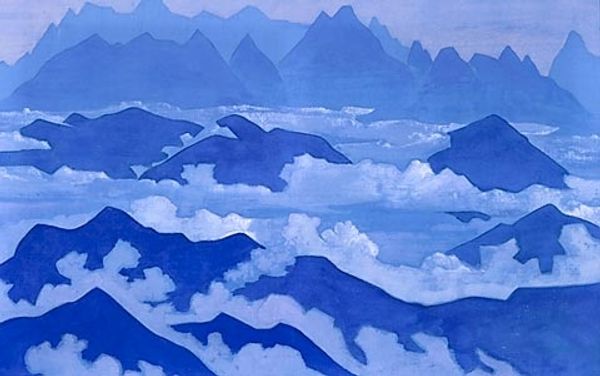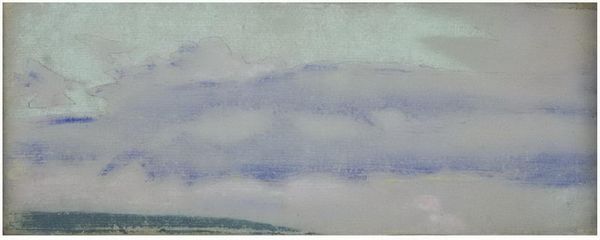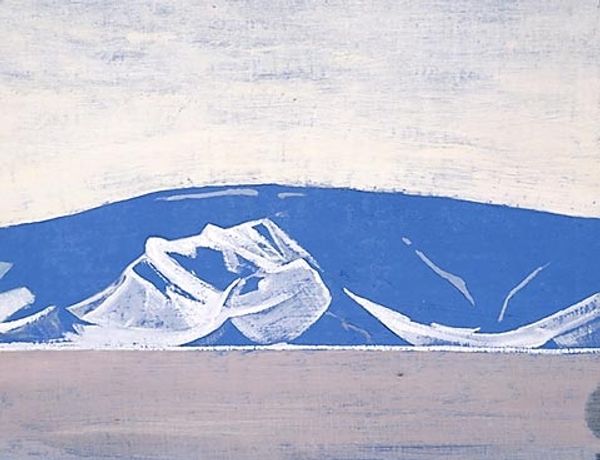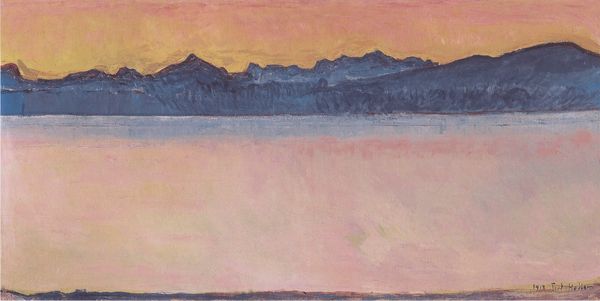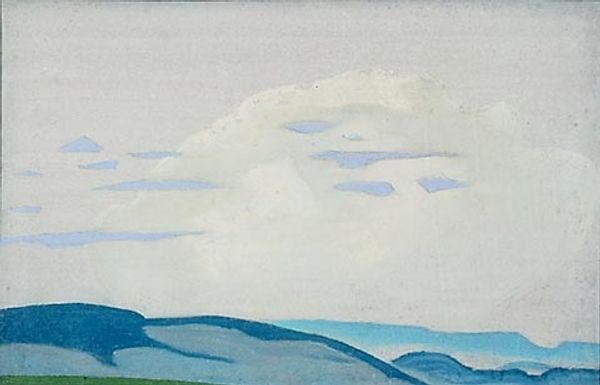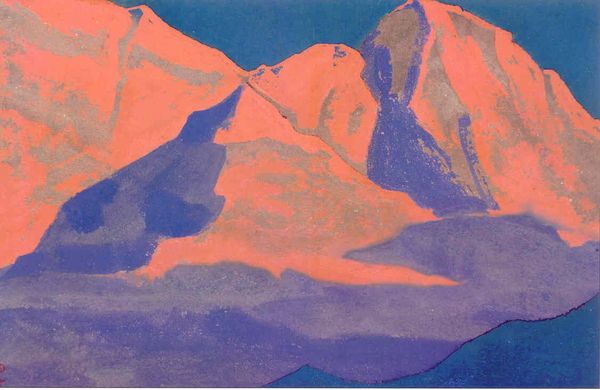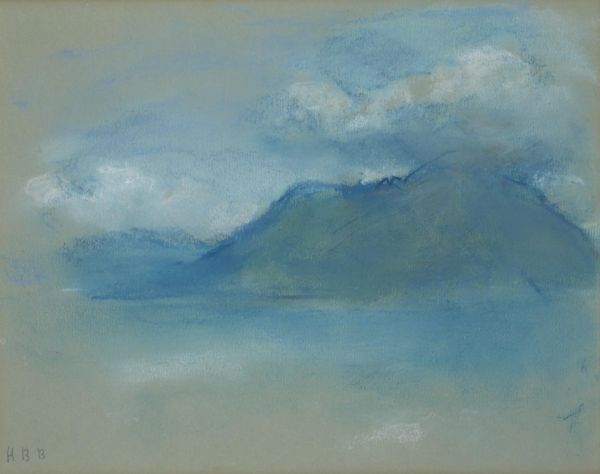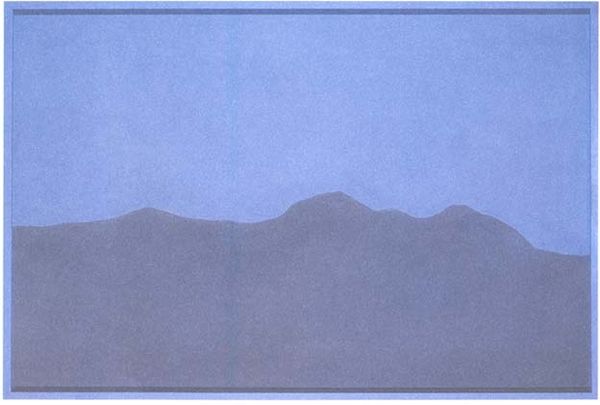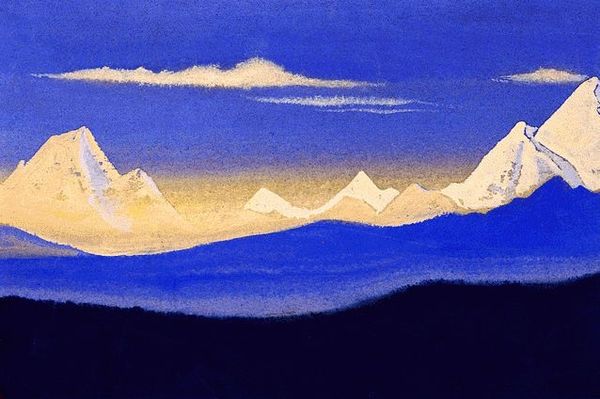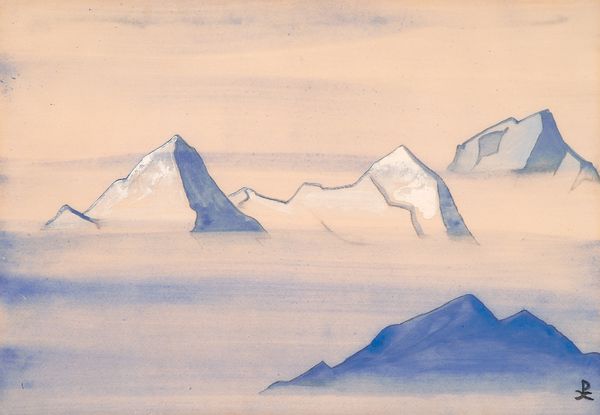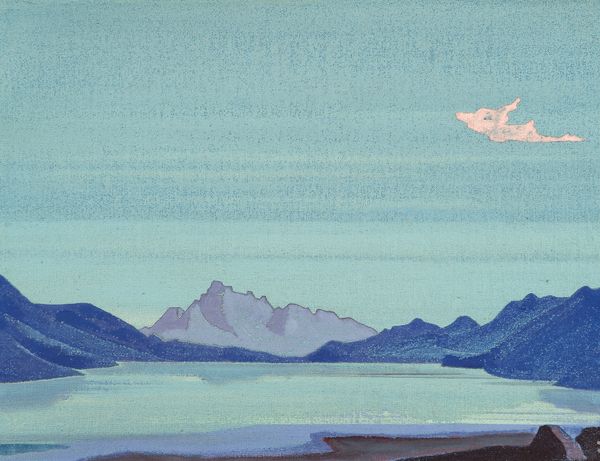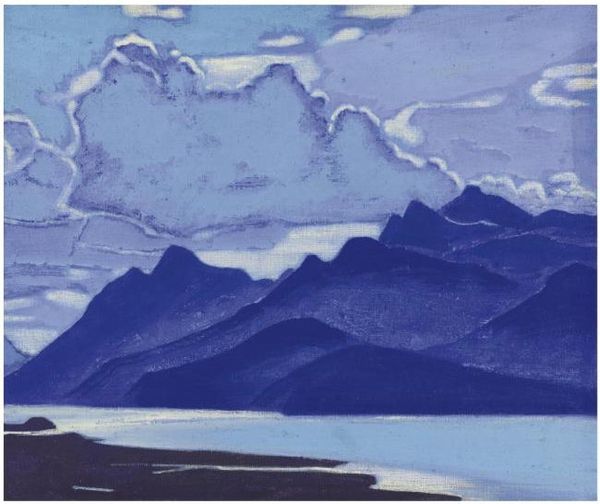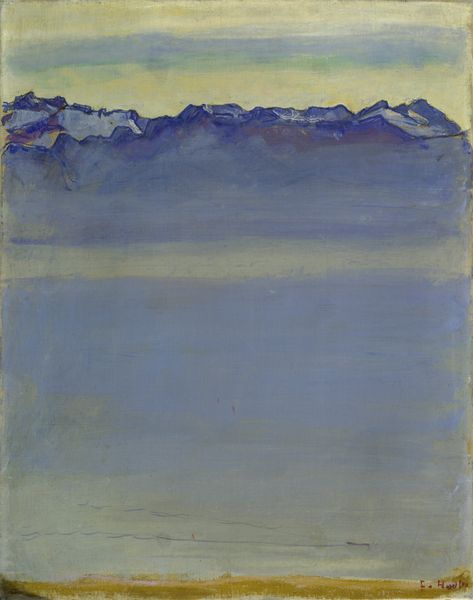
Copyright: Public domain
Editor: So, this is "Castles of King Gesar," painted by Nicholas Roerich in 1929. It looks like oil on canvas, and I'm immediately drawn to the textures – the thick paint creating a sense of depth. What are your initial thoughts on this piece? Curator: For me, this painting really emphasizes the relationship between material and meaning. Roerich used oil paint, a commercially available material, to depict this almost mythical landscape. Consider the labor involved, not just in Roerich's application of paint, but also in the extraction of the raw materials, their processing into pigments, and the manufacture of the canvas. How does that impact your understanding? Editor: That's an interesting perspective. I hadn’t really considered the broader manufacturing process. Does focusing on materials then affect how we interpret the symbolic nature of those 'castles' and the landscape itself? Curator: Absolutely. Think about what 'castle' even means. It's a structure built with resources, manpower, designed for control, and protection. By visually placing those on what appear to be snow-capped mountains does that amplify ideas about power or is it about the inaccessibility of spiritual realms? What does that elevation mean in terms of labor and access? The cool, monochromatic palette furthers the theme and makes one ask further questions of materiality. Editor: That makes so much sense. I was seeing a sort of ethereal scene, but now I'm thinking about the implied effort and the societal structures that underpin even the representation of something seemingly divine. Curator: Exactly. And even the act of painting – the application of manufactured materials to a surface to create an image – can be seen as a form of labor. Roerich's work encourages us to see beyond the surface beauty and think critically about the means of production behind it. Editor: Wow, I will never look at a landscape painting in the same way! It's like peeling back the layers of not just the image, but the whole system that allowed it to exist. Curator: Precisely! By considering these elements, we move past the surface and engage with the deeper societal and material implications.
Comments
No comments
Be the first to comment and join the conversation on the ultimate creative platform.
